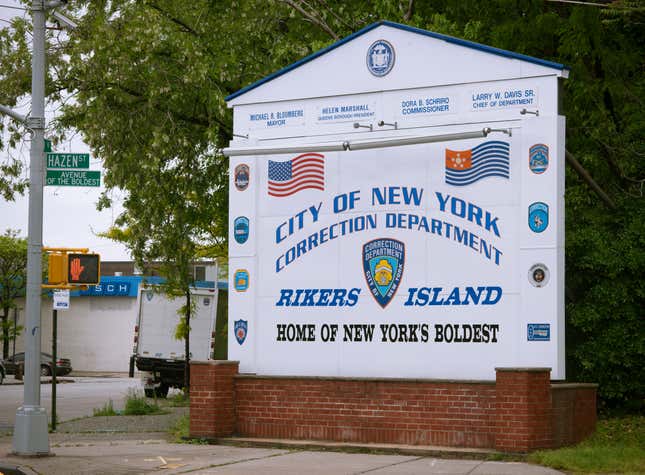
Despite being among those most at-risk for contracting the virus, there is still no set plan on when New York prisons will receive the COVID-19 vaccine.
The New York Times reports that while most states have listed incarcerated people in their vaccine rollout plans, New York’s plan doesn’t account for them at all. In October, the state released its initial plans for the vaccine’s rollout and listed those who lived in “congregate settings” to receive the vaccine after frontline healthcare workers but above those under the age of 65 with underlying health conditions. The plan did not specify whether those incarcerated qualified as living in “congregate settings,” even though a prison is pretty much the definition of a congregate setting.
The close living quarters and lack of ways to effectively social distance has resulted in the virus running rampant throughout the nation’s prisons. Since the start of the pandemic, 510,000 people in jails and prisons have been infected with the virus and at least 2,200 inmates and correctional officers have died.
“We have people dying on a weekly basis,” Stefen Short, a lawyer for the Prisoners’ Rights Project at the Legal Aid Society, told the New York Times. “What are the plans? There’s got to be a consistent message coming out of Albany and coming out of these agencies on this. Otherwise, you’re just generating a lot of fear.”
The confusion surrounding when to vaccinate those incarcerated isn’t unique to New York, as there have been political arguments in states across the nation. In Colorado, a plan to provide the vaccine in prisons early was met with fierce opposition, with a district attorney writing an op-ed in the Denver Post that accused the state of putting “the health of incarcerated murderers” ahead of “law-abiding Coloradans 65 and older.”
Man, you just know that dude was white. I mean a.) he’s in Colorado, and b.) white people love boiling down everyone who’s in prison as a murderer. As if there aren’t other, non-violent crimes people can be incarcerated for.
The simple fact is that early studies suggest those incarcerated are four times more likely to be infected and twice as likely to die. Unlike a certain Colorado district attorney, these folks don’t get to shelter in place and socially distance from the comfort of their own home.
Unfortunately, the backlash resonated with Colorado’s Democratic Governor Jared Polis. In December he declared that “There’s no way it’s going to go to prisoners before it goes to people who haven’t committed any crime.”
It would be polite to call New York’s vaccine rollout “messy.” State Republican lawmakers told the New York Times that Dr. Howard Zucker, the state’s health commissioner, told them that those incarcerated will be vaccinated in phase two. Conversely, state Democrats said they were told that they would be included in phase 1B, the phase the state is currently in.
Looking beyond inmates, the rollout was just as rough for the general population. Vaccines were thrown out because providers couldn’t find patients that matched the strict criteria established by the state. After the rules were loosened, the state’s cache of first doses was depleted and thousands of vaccine appointments were canceled.
Considering how poorly the rollout has been managed, it’s unsurprising that inmates have been given the short end. When asked by the New York Times about a plan to get the vaccine to inmates, spokespeople for New York Gov. Andrew Cuomo and the Department of Corrections and Community Supervision said that it was still in development. Which, you know, kind of seems like something that should’ve been developed before the vaccine is out in the public.
Despite these shortcomings, there has been some movement in getting the vaccine to inmates. On Jan. 6, New York City officials were granted authorization to begin vaccinating high-risk inmates at Rikers Island and several other facilities. In the two days following healthcare workers began administering doses to the 500 inmates were eligible. It should be noted that they represent only 10 percent of the 5,000 people currently incarcerated in city-run jails.

